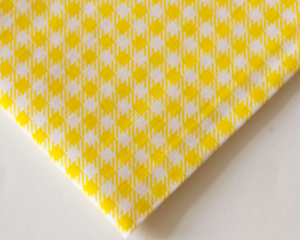 Cotton is the thinnest fibers covering the seeds of the cotton plant, a shrub one meter or slightly higher in height.
Cotton is the thinnest fibers covering the seeds of the cotton plant, a shrub one meter or slightly higher in height.
The natural strength, functionality, practicality, safety of cotton, and the composition of the fabric born from it are the basis for the thousand-year popularity of the material. Most often, cotton fibers are used to create the ideal material for clothing. But fishing gear, fire hoses, coffee maker filters, exclusive stationery, banknotes are also derivatives of the fluffy boxes of an unusual plant.
When the plant fades, the place of the flower is taken by a capsule with seeds. Each seed develops 7-15 thousand hairs. If we examine the fiber of the bolls in detail, it turns out that each of them is one plant cell grown from the cells of the seed coat. The strength of the hairs is related to the degree of their maturation.
As they “grow up,” cellulose is deposited on the walls of the hairs (from lat.cellula - “cell”), their thickness increases, the fiber tubules narrow, and the cotton receives a specific spiral crimp in the form of a twisted ribbon with a width of 0.01 to 0.03 mm. In terms of the chemical composition, almost 96% of high-quality cotton is cellulose, the rest is impurities: fatty, waxy, coloring, mineral. The fiber cuticle is the superficial cellulose-fat layer. It is in the cuticle that the creamy white coloring pigment is contained.
This is raw cotton, which is subsequently cleaned of seeds, litter, and impurities, sent under the press and for subsequent processing. When choosing a future cotton product, the length and thickness of the fiber are important, depending on the type of cotton:
Finished raw materials for fabrics and knitwear go through the stages of cleaning, carding (dividing the contents of the boxes into individual fibers), spinning, and weaving. Depending on its further purpose, cotton material also undergoes other processing processes: steaming, degreasing, bleaching, mercerization, dyeing, etc.
Cotton material is used in various industries, but the largest number of goods is produced by the textile industry, in which it is in demand as the basis for knitting and weaving.About 60% of the world's cotton harvest is used to make clothing, linen and towels. The rest goes to the production of awnings and tents, pharmaceuticals and cosmetics, medical products, and is used in astronautics and the automotive industry.
The environmental purity of cotton fabric is complemented by other beneficial properties:
Softness, ease of use and maintenance significantly expand the range of applications of cotton, including bed and underwear, women's, men's and children's clothing, and various accessories. The disadvantages of the material include:
To avoid negative changes in the appearance of a beautiful and comfortable fabric, it is necessary to care for it in accordance with the manufacturer's instructions.Using appropriate powders, white cotton fabrics can be washed in a washing machine at 95°C, colored ones - at 40-60°C. It is preferable to dry naturally, and iron wet using the “linen/cotton” mode. When working using the patchwork technique, before sewing with other fabrics, you must wash and iron the cotton scraps.
A small addition (3-5%) of synthetic fibers to cotton fiber, or mercerization, changes some properties, making it wrinkle-resistant, more durable, shiny and beautiful. The question of what mercerization is will be answered by the updated appearance of the fabric, which has received extraordinary smoothness, the shine of satin and the tenderness of silk after chemical treatment with a solution of copper hydroxide in ammonia. This is the most expensive type of cotton yarn with long, smooth and thin fibers. By combining weave options, manufacturers change the thickness of the finished product, creating original samples of cotton fabric:
The usual: poplin, calico, satin, chintz, corduroy, denim, madapolam; delicate veil, soft flannel, thin cambric, silky voile, curtain lettuce, incredibly popular chambray fabric - all this is the same one hundred percent eternal cotton, which allows the smallest admixture of silk, wool, synthetics to become a more comfortable, practical and beautiful thing.